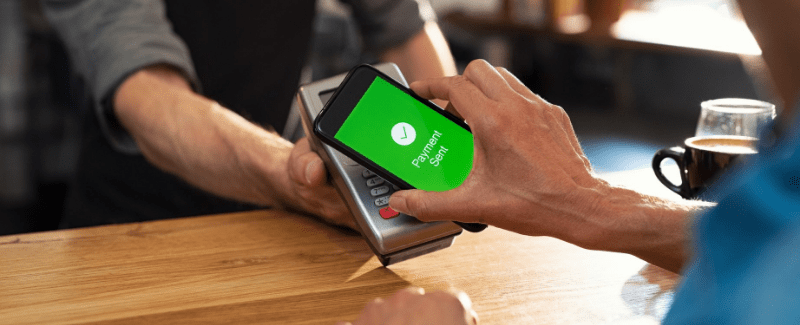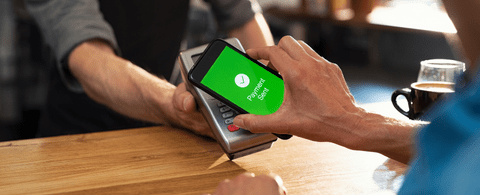Mobile Payments: What Will It Take to Convince Consumers?
Posted by Tiffany Taylor, Alison Arthur and Bethany Frank on 25 Oct 2021


As if mobile payments at the point-of-sale weren’t already becoming more commonplace for merchants and consumers, the pandemic only exacerbated adoption even further. As the technology becomes more ubiquitous, the lion’s share of mobile payments in the U.S. is being conducted via four platforms—Apple Pay, Google Pay, Samsung Pay, and the Starbucks app.
While the Starbucks app once dominated the mobile payments space, in 2019, it was finally overtaken by Apple Pay with 27.7 million in the U.S using the payment platform that year, according to eMarketer. However, the Starbucks mobile app remains a formidable force, with 25.2 million users accounting for 39.4 percent of mobile payment app users. Google Pay and Samsung Pay come in third and fourth, with 12.1 and 10.8 million users, respectively.
While mobile payments adoption has been slower in the U.S. than in many international markets, it is increasing. With the onset of the global pandemic, adoption has grown and is expected to continue to increase. According to Mercator, 39 percent of consumers reported making a purchase via a mobile phone (either online or in-store) in 2020, an increase of 5 percent over the previous year. What will it take to accelerate mobile payment adoption by convincing U.S. consumers to change their payment habits and embrace the benefits?
Accessibility
For many consumers, mobile payments are still an abstract concept. There are also key demographics that might be uncomfortable using the technology. Widespread adoption of new payment methods often takes time, as seen previously with the transition from cash to card-based payments.
In order to convince these consumers to adopt a new payment method, digital wallet providers need to emphasize convenience and accessibility. From sign-up to daily use, everything about the app’s design must be seamless and intuitive. Any amount of friction in the user experience can mean the difference between a consumer quickly integrating the technology into his or her daily life and one who never opens the app again.
Merchant Acceptance
Late adopters are out there, but for millions of other consumers who embrace the benefits of mobile payments, accessibility is not the issue. Despite their enthusiasm, they may be discouraged from using mobile payments due to a lack of merchant acceptance. Until merchant acceptance is as ubiquitous as credit cards and debit cards, mass adoption of mobile payment platforms will likely remain an uphill battle.
Consumers shouldn’t have to wonder whether their mobile payment platform of choice is accepted by the retailers and service providers they frequent most often. Businesses can display signage that helps take the guesswork out of whether a certain mobile payment type is accepted.
Merchants can also encourage adoption by offering customers enhanced rewards. Part of the Starbucks app’s success may be due in part to the seamless integration between its rewards program and mobile payment technology. Integrating these features (plus mobile ordering) into a single, sleek, and comprehensive app allows customers to place orders, make payments, manage their accounts, and collect rewards from the convenience of their mobile devices.
Disruption
Mobile payments took off in India after the central government announced the sudden nullification of large-denomination Rupee notes. This announcement left millions who were previously dependent on cash transactions panicking to find a secure and legitimate way to pay for goods and services. Without a similarly disruptive force giving consumers a real reason to change their payment habits in the U.S., adoption is expected to remain slow. However, the fast rise of mobile payments in other parts of the world could convince U.S. consumers to embrace the trend as well.
The Bottom Line: Mobile payments can be faster, more convenient, and more secure than traditional payment methods. Convincing consumers to overcome the hurdles that challenge widespread adoption will require creative thinking from mobile payment providers and merchants alike. Enhancing accessibility, broadening merchant acceptance, and embracing disruption are just three factors that can help encourage a permanent shift in consumer behavior.
*This is an update on an original post published July 2019
Schedule A Personalized Demo
Schedule a Free Consultation







